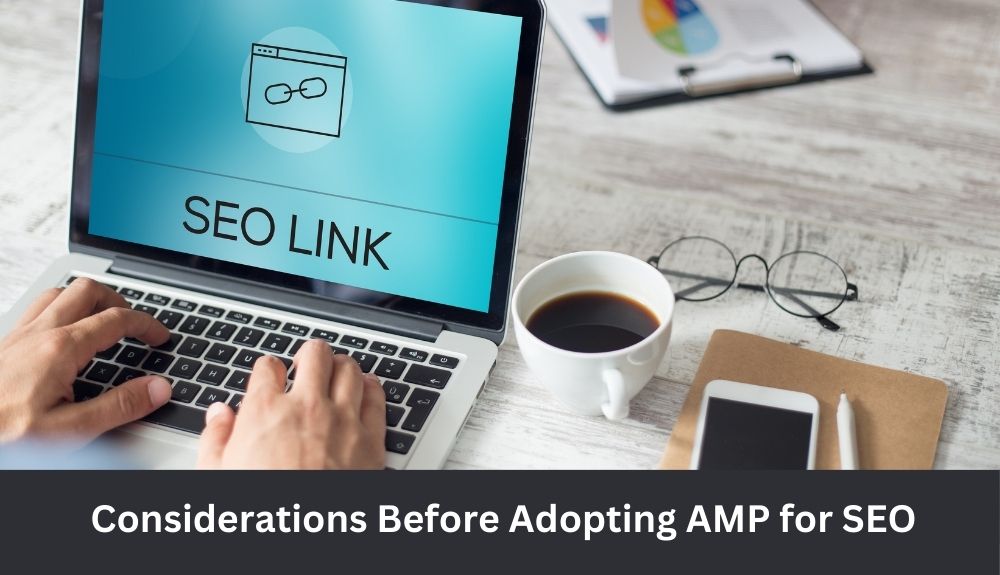In the fast-paced world of digital marketing, staying ahead of the game is crucial. One way to boost your website’s performance and enhance user experience is by implementing Accelerated Mobile Pages (AMP). But before diving headfirst into this trend, let’s explore the pros and cons of using AMP for SEO. Let’s find out if AMP is a game-changer or just another passing fad in the ever-evolving landscape of search engine optimization.
Understanding AMP (Accelerated Mobile Pages)
AMP (Accelerated Mobile Pages), which stands for Accelerated Mobile Pages, is an open-source framework developed by Google to create fast-loading web pages for mobile devices. It aims to improve the overall user experience by reducing loading times and providing a seamless browsing experience on smartphones and tablets.
By utilizing stripped-down HTML code, AMP restricts certain design elements and functionalities that may slow down traditional web pages. This streamlined approach helps websites load almost instantly on mobile devices, leading to lower bounce rates and increased engagement from users.
While AMP primarily targets mobile users, it also benefits desktop users by improving site speed and performance across all platforms. Additionally, AMP pages are favored by search engines like Google due to their enhanced speed and mobile-friendliness, potentially boosting your website’s visibility in search results.
The Benefits of Using AMP for SEO
When it comes to boosting your website’s SEO performance, implementing Accelerated Mobile Pages (AMP) can be a game-changer. By utilizing AMP, you are providing users with lightning-fast loading times on mobile devices, which ultimately enhances the overall user experience.
One significant benefit of using AMP is that it can lead to improved search engine rankings. Google has shown preference towards websites that offer faster load times and better mobile usability, making AMP a favorable choice for SEO optimization.
Additionally, AMP pages are designed for optimal performance on mobile devices, ensuring that your content is easily accessible and engaging for users on the go. This enhanced user experience can result in lower bounce rates and increased time spent on your website.
Moreover, since speed is a crucial ranking factor in search algorithms, implementing AMP can give your website a competitive edge in search results. With faster loading speeds and improved visibility in SERPs, you have the opportunity to attract more organic traffic and reach a wider audience interested in your content.
The Drawbacks of Implementing AMP

Implementing AMP on your website may come with its own set of drawbacks to consider. One major concern is that AMP restricts certain types of dynamic content and functionality, which can limit the user experience compared to traditional web pages.
Furthermore, since AMP cached pages on Google servers, it can lead to less control over how your content is displayed and accessed. This could potentially impact branding efforts and customization options for your site.
Another drawback is that implementing AMP requires additional development resources and ongoing maintenance to ensure compatibility across different devices and platforms. This can result in increased costs and complexity for website management.
Moreover, some argue that using AMP may not necessarily guarantee higher search rankings or improved SEO performance. It’s important to weigh these potential downsides against the benefits before deciding whether to adopt AMP for your SEO strategy.
How to Implement AMP on Your Website
Implementing AMP on your website can improve user experience and boost your SEO efforts. To get started, you need to ensure that your website is mobile-friendly and has a responsive design. Next, you can either create AMP versions of your existing pages or use plugins like AMP for WordPress to simplify the process.
Once you have decided on the approach, it’s important to validate your AMP pages using tools like the Google AMP Test. This will help identify any errors that need fixing before going live. Additionally, optimizing images and CSS can further enhance loading speed.
Remember to set up proper metadata tags such as canonical links to avoid duplicate content issues. Submitting your AMP pages to search engines through XML sitemaps will ensure they are crawled and indexed efficiently for better visibility online.
By following these steps diligently, you can seamlessly implement AMP on your website for improved performance and SEO benefits!
Considerations Before Adopting AMP for SEO

Before jumping on the AMP bandwagon, there are a few key considerations to keep in mind. Assess if your website heavily relies on dynamic content and interactivity – as these elements might not be fully supported by AMP. Additionally, consider the potential impact on your current SEO efforts; while faster loading times can boost rankings, AMP pages may also limit design flexibility and branding opportunities.
Moreover, evaluate the resources required for implementing and maintaining AMP – from technical expertise to ongoing support. It’s crucial to weigh the trade-offs between speed and functionality against the investment needed. Furthermore, think about user experience implications; will stripping down features for speed compromise engagement metrics?
Ponder how adopting AMP fits into your overall SEO strategy – does it align with your long-term goals? Taking a holistic approach before diving into AMP implementation can help you make an informed decision that benefits both users and search engine optimization efforts.
Conclusion: Is AMP Worth It for Your SEO Strategy?
In the end, whether implementing AMP for your SEO strategy is worth it depends on various factors unique to your website and goals. While AMP can improve page loading speed and user experience on mobile devices, it may also require additional resources and technical expertise to implement effectively. Consider the potential benefits against the drawbacks before making a decision that aligns with your SEO objectives and priorities. Weighing the pros and cons will help you determine if AMP is the right fit for enhancing your website’s search engine optimization performance in the long run.










